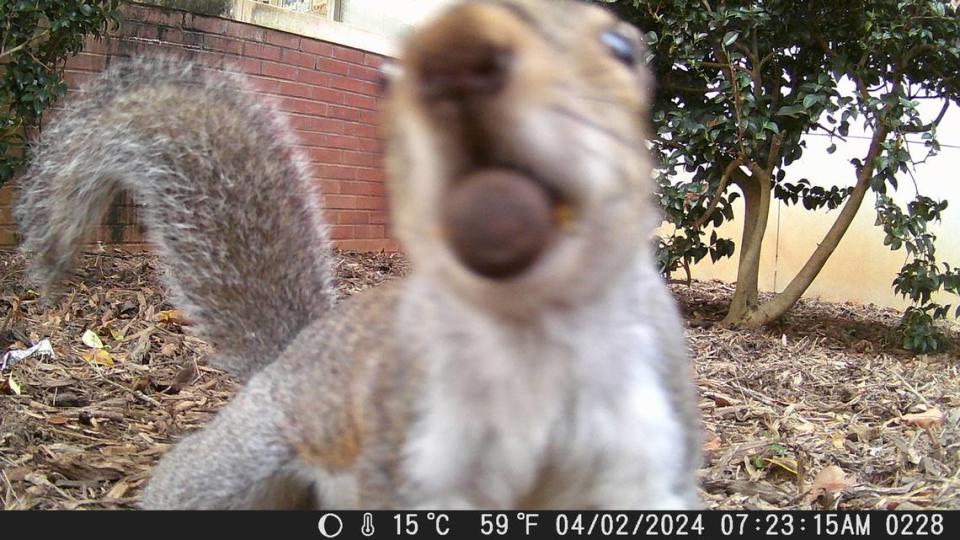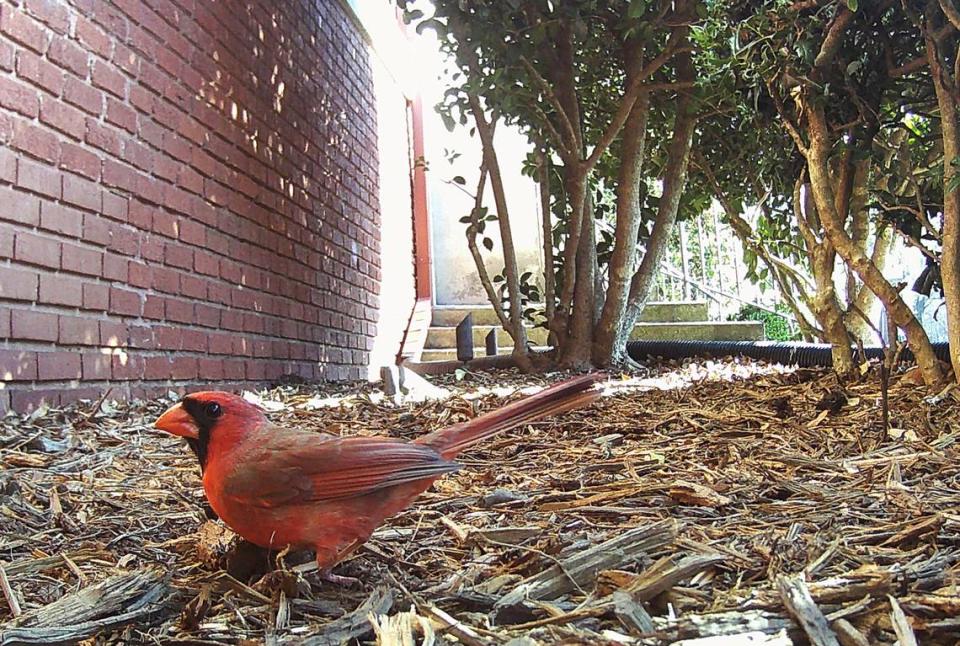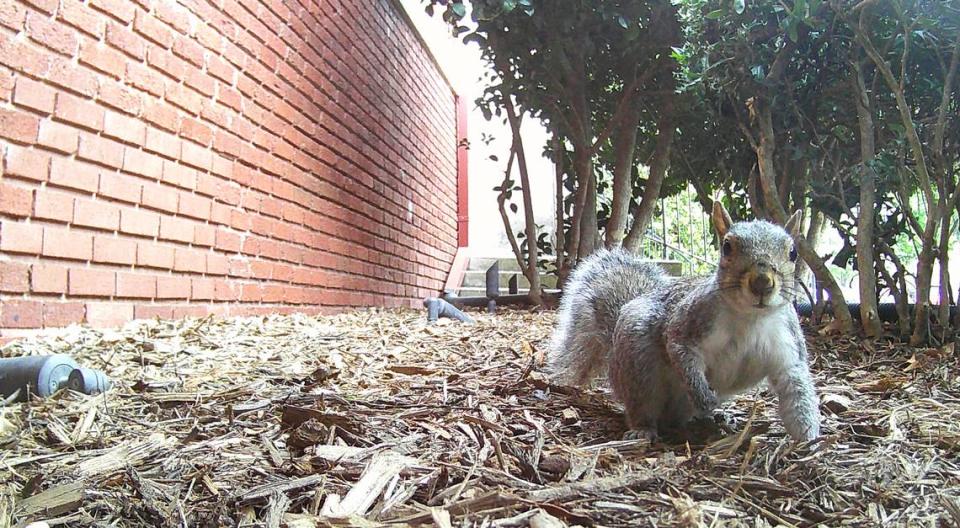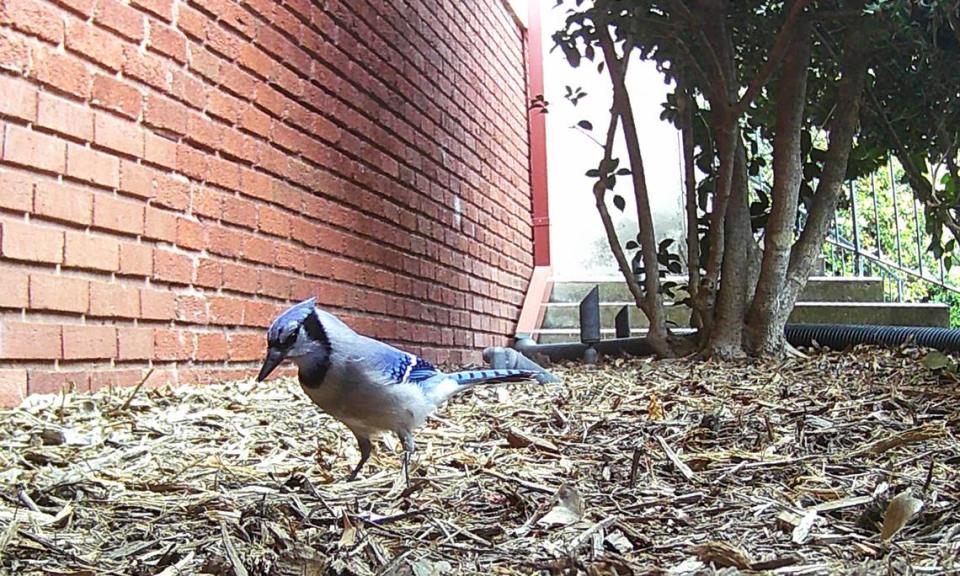See the Charlotte wildlife captured on college student’s motion-triggered cameras
I’ve studied conservation biology for the last four years in the middle of Charlotte, on a university campus shared with thousands of birds and animals. Learning more about their lives was one of my goals in this last semester before I leave these tiny classmates behind.
Environmental organizations describe how, after a big moment during the beginning of the pandemic, birding continues to surge in popularity among millennial 30- and 40-somethings. What I discovered during a month-long, garden-variety experiment explains why watching birds and wildlife continues as a simple, joyful activity for more than a third of adult Americans.
Six motion-triggered wildlife cameras
As the spring equinox approached on March 19, I acquired six wildlife cameras from our biology department and placed them in locations around four academic buildings at Queens University of Charlotte. They were strapped to small trees near the building foundations, only a couple of inches above the ground.
My educated guess was that these locations would capture movement along what biologists call a habitat corridor or what one professor calls the “squirrel highway.”

If you weighed less than a pound and shared an environment populated by creatures between five and 200 times your size, several of which would like to eat you, where would you hang out? The margins between building foundations and bushes provide mostly quiet pathways, access to food sources, shelter from weather and cover from predators such as hawks and owls.
As it turns out, I was right, and my motion-triggered cameras shot 4,600 images, a little less than half of which displayed wildlife. They captured raccoons, squirrels, rabbits, stray cats, pet dogs and two humans playing what looked like hide-and-seek. Among bird species, the cameras spotted brown thrashers, northern cardinals (male), dark-eyed juncos, mourning doves, bluejays, Carolina wrens and many American robins.

This is clearly not an exotic list nor an exhaustive academic study. If you live or work in Mecklenburg County, you’ll easily spot all of these and many more. I was surprised and disappointed not to have photographed any images of chipmunks because I frequently spot them on campus. Although we often see hawks and owls, I didn’t capture any because these paths were low and hidden.
Animal and bird behavior at night
But what I discovered provided a joyful reminder of Thoreau’s Walden, and it reinforces why I want to do environmental field research as a career.
Raccoons are nocturnal; our cameras captured them only in the wee hours between midnight and 4 a.m. They have excellent hearing and night vision, and they patrol the wildlife corridor. Our infrared cameras showed their keen eyes wide open.
Squirrels are especially tame on university campuses. They didn’t provide much news, but they have a hammy knack for photobombing our cameras.

Songbirds are mostly diurnal, so their images were captured during the day, with a few extending into early evening. I use a bird identification app called Merlin Bird ID, developed by the ornithology lab at Cornell University. Bluejays are among my favorites, although I don’t spot them as much as I would like in Charlotte.
I captured two bluejay images at around noon on a Monday and a Friday. This bluejay appeared to be gathering twigs and materials to build a nest. Based on information from Cornell, I assume it was a male. Although both sexes look about the same, males tend to gather materials, and females construct the material into nests.

Of my sample of 4,600 wildlife images, 70 displayed wildlife clearly. Most of these images were captured by a single camera at the corner of an academic building on the edge of the campus. All our cameras were operating properly, so my theory is that this location is popular because it’s less frequented by human foot traffic and because it’s close to sources of food and water.
Future environmental experiments
I am excited about how artificial intelligence-based archival and identification programs will support experiments in the future. AI programs will log times, dates, and species identification and correlate patterns and behaviors across a topographic landscape of wildlife cameras.
My graduation ceremony was Saturday, May 4, and I look forward to a career in the outdoors. On your visits to university and high school campuses in this season of graduations, take a moment to thank the tiny creatures who cohabitate with us. I appreciate their unsung contributions to my education.
Finian Curran is a 2024 graduate of Queens University of Charlotte, which provides the news service in support of local community news.


